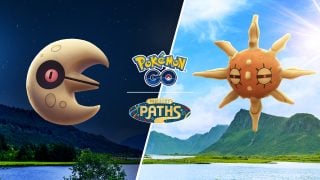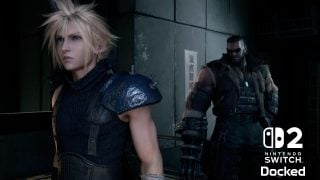3D collectathon platformers occupy the same lane for me as comfort food or an AC/DC album. They’re reliable, and no matter how much time passes, I can always return to them and feel familiarity. Of course, the best 3D platformers that leave their mark on history end up feeling more like a Between The Buried And Me album — quirky, ambitious, and, hey, is that ragtime piano? Full of twists and turns is how I prefer most of the art I take in, but there’s still just that wonderful feeling of returning home that a classic genre can provide.
This was how I felt while combing through Ruffy and the Riverside, the colorful debut title from German development studio Zockrates Laboratories. This part hand-drawn, part polygonal adventure follows Ruffy, the titular happy-go-lucky young bear who looks like a Tanooki suit, Pip the winged bee companion, and Sir Eddler, a gem-loving mole. Ruffy is the prodigal son, the chosen one after the land of Riverside comes under attack by a sentient GameCube start-up screen (okay, a Rubik’s Cube might be more apt here) named Groll, who seeks the darkening of the World Core that keeps Riverside peaceful. This Hero’s Journey approach is just one of the aspects of Ruffy that harkens back to the 3D platformers of the N64 and GameCube era, where every box art protagonist was inevitably on a quest to save their home.
Here’s where things really get interesting — that World Core I mentioned above controls the textures of Riverside’s nature and surfaces. As the Chosen One, Ruffy has the ability to swap these textures at will in order to traverse the land as he sees fit or to solve puzzles. So, get this: Ruffy and the Riverside looks like a coloring book that existed inside a Paper Mario game, plays like a latter-day Crash Bandicoot game with its open world, coin collecting, and box-breaking, while enabling a near-constant flow of Zelda-esque puzzle-solving with a Banjo-Kazooie buddy duo? I thoroughly enjoyed this blend of ideas that Ruffy mixes tastefully into a delicious late ’90s fruit smoothie. The blend of hip-hop beats with folk overtones even reminded me ever so slightly of Stewart Copeland’s legendary Spyro compositions at times.
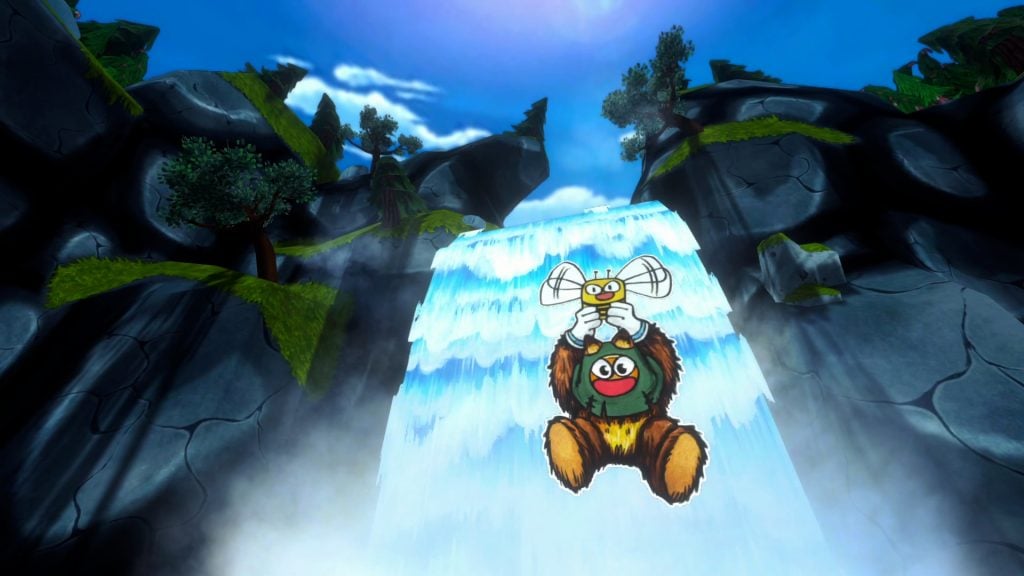
How does the texture swapping work? The easiest way to depict this concept is with the waterfall example. You need to ascend this waterfall somehow. You can’t run up a cliffside or walk on water, so you see a nearby set of vines, copy them to your palette, then paste them onto said waterfall. Voila — now you can climb what was once water and is now climbable greenery. It’s brilliant, and it’s not just used with nature either. Playing cards with different icons may need to be matched, a set of four dice require equal numbers on both left and right, or a stained-glass window could need the color from the leaves of a tree in a nearby meadow. It’s all relative and highly situational, but the way the swapping mechanic worked was consistently fluid and delightful.
Riverside enjoys the benefit of being a pseudo-open landscape, and with that comes very few, short loading screens. That is to say that getting around the land feels more like Banjo-Kazooie than Super Mario 64. There are doors to different areas, but these areas usually contain the puzzle you need to solve to get more of the actual world to appear so you can move forward. It was pretty cool to see a grind rail or a series of platforms that weren’t there before load in seamlessly before my eyes without a loading screen. I also just so happen to find maps — and how they’re contained and expanded upon across a game’s length — to be pretty neat. I came away thoroughly impressed by how well Zockrates nailed making an open map on their first attempt.
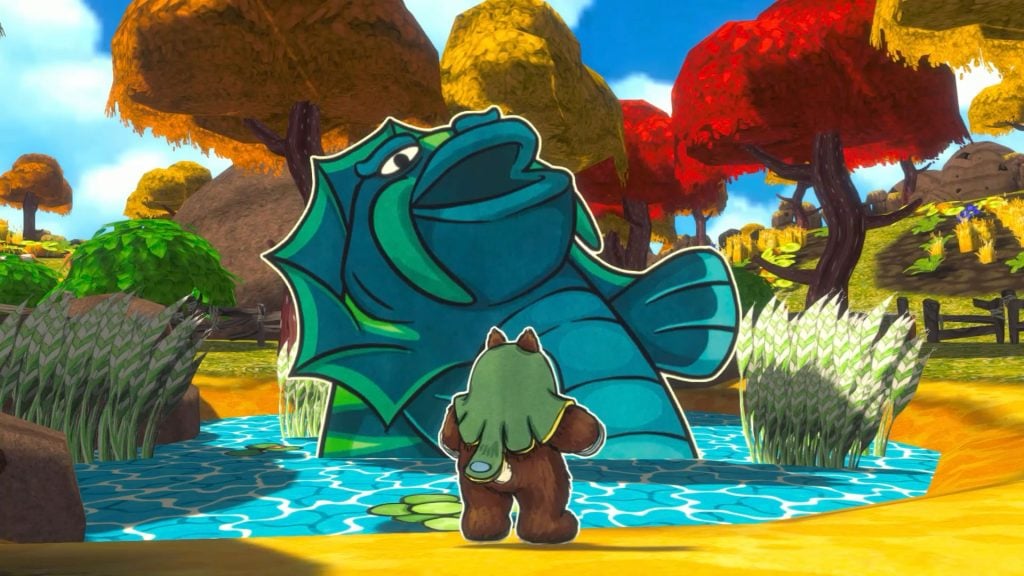
Like its many influences, Ruffy is often wacky. You’ll use hay bales to compete in races and Tony Hawk’s Pro Skater-esque halfpipe trick competitions. Ever participated in a grave decorating contest before the year 2025? You’ll do great in Riverside. The fate of the universe is decided by… a game of Wheel of Fortune? And the letters are for the giant Hollywood-esque sign that spells “Riverside”? Whoa. There’s also 2D cave wall platforming aped lovingly from Super Mario Odyssey, but with hand-drawn chalk art instead of pixels. Would you believe you can even swap elements in these sections too? Unpredictability is a strength in Ruffy and the Riverside.
This is a collectathon, so you can expect to catch ’em all in Riverside. Butterflies, that is, as well as little furball creatures with big, beady eyes called Etoi. The best part of the collecting is that it ties in perfectly to the exploration and puzzle-solving. Butterflies are the reward for getting to hard-to-reach spots, and Etoi are cleverly hidden, requiring some poking around to come across. Coins are scattered everywhere as well and can be used to gamble in Riverside’s hub (kid’s game, huh?) for extra hearts and stat boosts or to purchase new cloaks those boosts can be applied to. There are precious few enemies and boss fights in this game, so more hearts didn’t feel like a necessity, but the extra stamina wheel à la Breath of the Wild was welcomed. Ruffy moves like lightning, though, so don’t worry about feeling like getting around the map is sluggish. Seriously, this kid is hopped up on Mountain Dew.
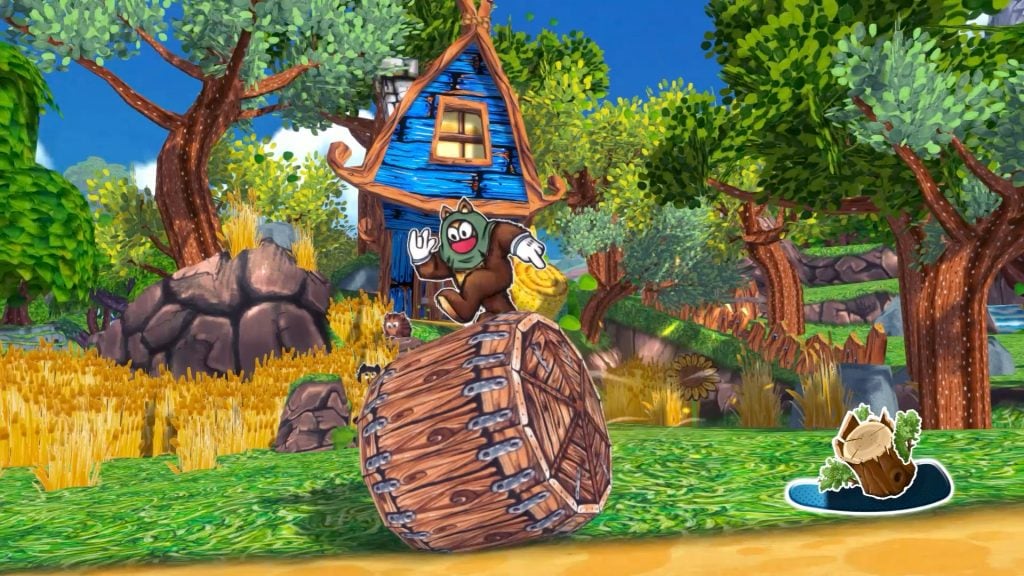
You may have read the paragraph where I mentioned this is Zockrates Laboratories’ first game. How did they do? Well, pretty darn good. While the puzzle setups could have more context and a more consistent hint system, the puzzle setups were rarely repeated and provided that satisfying lightbulb moment. Ruffy’s world is fairly realized even on the studio’s first go-around, but the characters could be more direct. Some conversations gave great exposition but no charm. I didn’t find myself entertained by these characters too often, and they often felt like a vehicle in service of the plot. The plot itself has a decent setup, but the ending left me quite lukewarm. I also regret to inform anyone playing this game that the character voices themselves are grating, and you will hear their noises constantly. There is the option to turn the voices all the way down, but it’d be nice if that didn’t need to be done. Occasional performance stutters, while infrequent, put a bit of a damper on the proceedings as well. But these are just stage jitters — all things that can be ironed out with more experience.
Ruffy and the Riverside is available now as we head into the busy second half of 2025. With huge 3D platformer stalwarts still to come, I’m happy to say I’ll fondly remember this game as being one of the year’s best offerings in the genre. With a colorful world, an intuitive main mechanic in the Swap ability, and plentiful puzzles to solve for a good while after rolling the credits, this 8-hour romp is a pretty good time and a solid debut for an indie up-and-comer.
Leave a Comment
